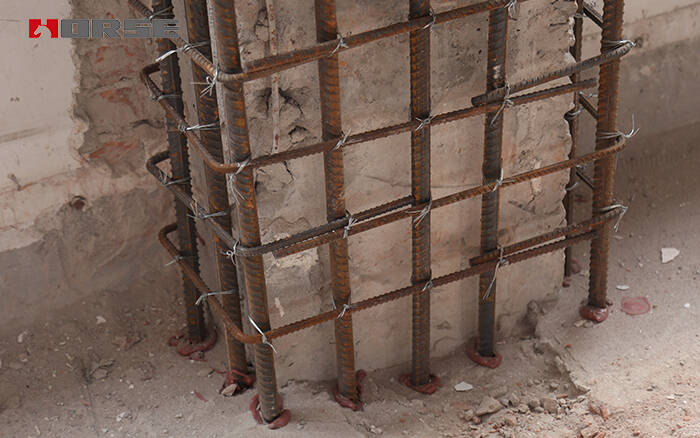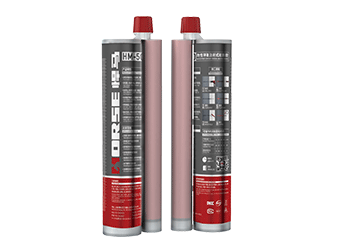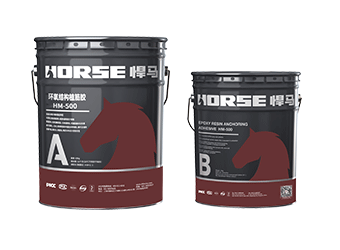Solutions
Horse Construction offers full range of structural strengthening materials with technical supports, documentation supports, products supports, project supports.
Increase Section Reinforcement

[Enlarged cross-section reinforcement technology (outsourcing concrete reinforcement technology)
Mainly increase the cross-section and reinforcement of the component
Thereby improving the strength, rigidity, crack resistance and stability of the component. ]
Increasing cross-section reinforcement is obviously not a face project. In simple terms, increasing the cross-section is to make the original column large, with two sides, three sides, and four sides, which is equivalent to saying that the original column cannot withstand it.
There are two reasons for the inability:
One is because the new regulations require greater force requirements. That is to say, the earthquake resistance was not considered, and the force was sufficient in the calculation. Now considering the earthquake resistance, it will be necessary to increase the reinforcement, which does not meet the force requirements in the calculation.
The second is because of functional changes. It used to be an office, but now it is a warehouse or a library. For example, the load was only 200 kg, but now it has 500 kg. There is a big change in the force. In this case, the enlargement of the column will be considered, that is, reinforcement.
According to the purpose and requirements of the reinforcement, it can be divided into the reinforcement of increasing the cross-section or the reinforcement of adding reinforcement, or the reinforcement of both.
To increase the cross-section as the main reinforcement, in order to ensure the normal operation of the supplemented concrete, it is also necessary to properly configure the structural reinforcement.
Increase the reinforcement based on reinforcement. In order to ensure the normal operation of reinforcement, it is necessary to appropriately increase the section size according to the structural requirements such as the spacing of the reinforcement and the protective layer. Reinforcing steel bars should be welded to combine the new and old concrete.

However, increasing the cross-sectional size sometimes affects the appearance and clearance of the house.
The owner does not want to increase the cross section. Carbon cloth is relatively inexpensive. If the design requirements can be met, carbon cloth can also be used.
Or if you increase the cross-section and don't want to increase it too much, there will be another outsourcing angle on the outside.
Enlarging the cross-section, sticking carbon cloth, and outsourcing angle steel are commonly used reinforcement methods. Which one to choose depends on the current state of the building's stress, cost, and construction progress. It takes longer to increase the cross section. Although the time for carbon cloth and angle steel is shorter, the increase is not large, because it needs to meet the requirements of the design specification, and it cannot be increased too much.

Of course, increasing the cross-section reinforcement technology also has its shortcomings, that is, heavy on-site wet work workload and longer maintenance period, which has a certain impact on production and life.
Ways to increase the cross-section of different components
For the column, according to the different force conditions and actual structure, four-bread sleeves, three-bread sleeves, and two bun sleeves in the main force direction should be used for reinforcement. Insufficient section bearing capacity focuses on adding steel bars, if the axial compression ratio exceeds the standard or the concrete strength is low, then focus on increasing the sheathing area and concrete strength grade.
For continuous beams, when only the negative bending moment of the support part is not enough to bear the bending bearing capacity, reinforcement can be added on the top surface. If both the positive and negative bending bearing capacity are insufficient, reinforcements should be added on both sides. If the shear bearing capacity is also insufficient, stirrups should be added to the three-sided or four-sided wrap.
For simply supported beams, when the flexural bearing capacity of only the normal section is insufficient, the reinforcement at the bottom of the beam shall be reinforced with reinforcement.
For continuous slabs, reinforcement meshes and concrete layers should be added on both sides, and the negative reinforcement of the support should pass through the wall and must not be disconnected.
For simply supported slabs, when the flexural bearing capacity is insufficient but the difference is not significant (≤15%), a high-strength concrete laminate layer (reinforcement according to the structure) can be added to the slab surface for reinforcement. If there is a large difference in bearing capacity, steel mesh should be added to the bottom of the slab and reinforced with a shotcrete layer.
For walls, there are single-sided reinforcement and double-sided reinforcement, generally symptomatic reinforcement, lack of reinforcing steel reinforcement, if the concrete strength is low or the axial compression ratio exceeds the standard, focus on increasing the thickness of the reinforcement layer and the strength of the concrete.
You can find anything here you are in need of, have a trust trying on these products, you will find the big difference after that.

two-components modified epoxy resin adhesive, with high quality plastic tube, double cartridge package

Two-component modified epoxy resin adhesive, applied to chemical planting reinforcing bar and anchor bolt anchoring

Two-components modified epoxy resin adhesive, with high quality plastic tube, double cartridge package for anchoring